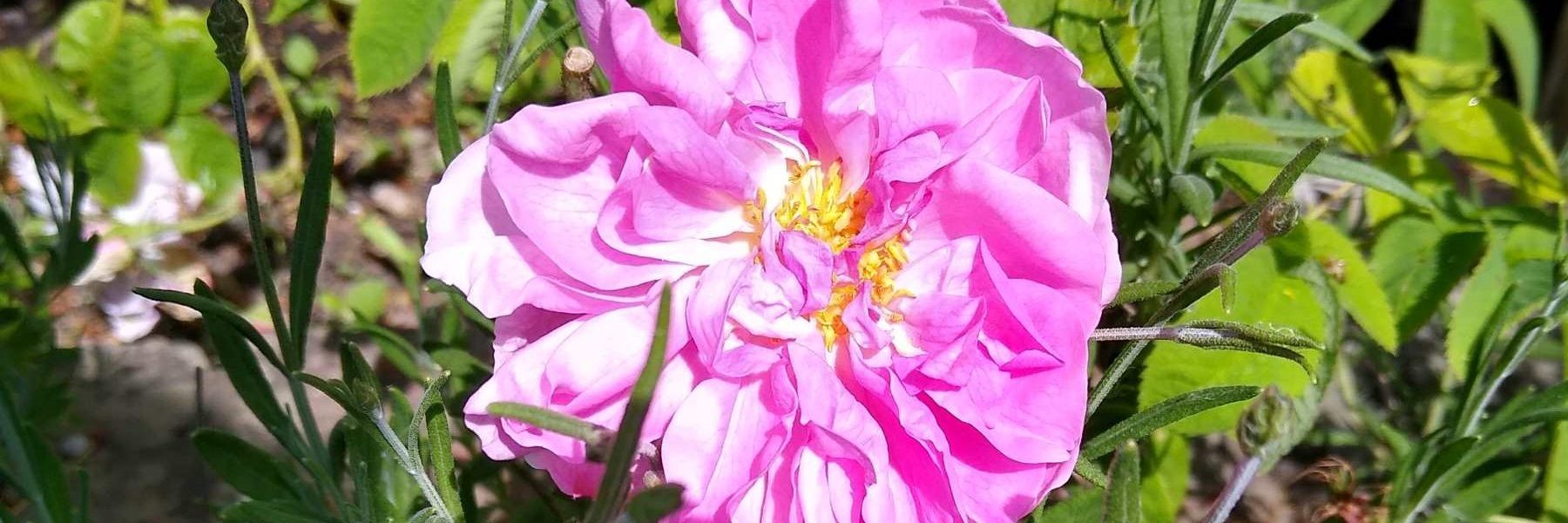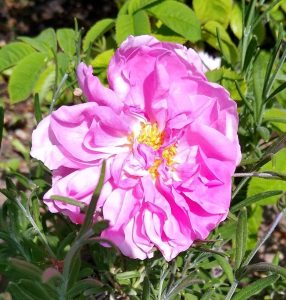


Featured 1620s plant of the season

Damask Rose
This rose is thought to have originated from Damascus and was probably a cross between Rosa gallica and the wild musk rose of Southern Turkey. This rose was definitely grown for its scent, not its appearance. The modest flowers appear only once per year in common with other roses of that period.
In 2018 we came across a labelled example in the 1620s Garden and took cuttings. For the first time, in 2025, the cuttings have really developed into bushes with a good display of flowers.
Four hundred years ago the petals were harvested to make either a form of potpourri or rose water. As it was believed that many illnesses originated with bad smells, the rose potpourri was seen as a form of preventative medication while rose water was used in the production of medicines as well as for personal hygiene.
